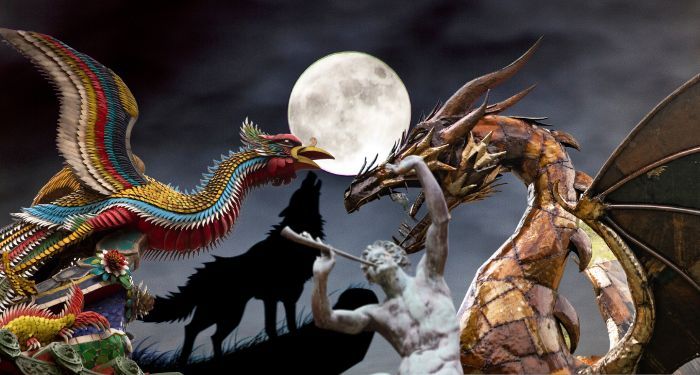
20 of the Most Fascinating Mythological Creatures Across Literature
Dragons, rusalkas, and demons, oh my! Mythological creatures and entities abound in literature, and many authors today are showing these age-old beasts in new and exciting ways. This post is not an exhaustive bestiary, as that would take ages. Rather, this is a list of 20 mythological creatures that excited my own imagination on mythologies, and whose works I hope you’ll enjoy.
I also chose to include a list of creatures and entities you might not normally pick. Some readers may glance at this list and exclaim, “how very dare you” for missing creatures from popular books or series. To that I say: Yes, I know. I did that on purpose.
It is my goal to introduce creatures and books that you can discover and share with newfound glee.
Defining “Mythological” Creatures
To begin, Merriam-Webster defined “mythological” as “of or relating to mythology or myths: dealt with in mythology.” Its second definition also states “lacking factual basis or historical validity.”
Going off of the above definition, I want to include mythological creatures that have a basis or inspiration in mythology. For example, dragons, sirens, and dryads have a basis in English and Greek mythology. Demons, in many forms, come from various mythologies around the globe. Where the line is drawn, and how stark that line, is absolutely debatable, and I encourage readers to debate this line and list their own favorites on social media. Some of my choices tickle the edges of creatures based more in legend than myth, but you be the judge.
For the sake of organization and navigation, I chose to list creatures by sections based on the creatures’ main elements: Land, Water, Air, Forest, and an underworld-themed section, which encompasses creatures and entities (some of them are spirits) who hail from underworlds, netherworlds, and the gray places in between. I am including books across genres, from fantasy romance to literary, in hopes that you’ll each find something to your fancy, or a new genre to try. Additionally, for some of my favorite titles, I’ve includes descriptions and passages in quotations from the books themselves.
Air Mythological Creatures
This is the largest section, and for good reason. The most notable mythological creature is arguably dragons, and there are examples featuring them in literature. No, I am not going to list Game of Thrones or Lord of the Rings because those are a given (free your minds!). But you should also know that dragons are not the only creatures that master the skies.
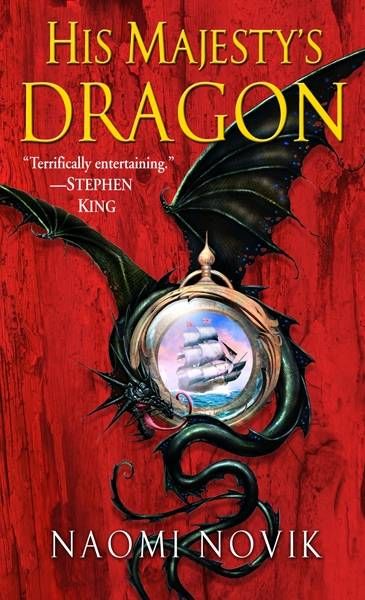
His Majesty’s Dragon by Naomi Novik: The Dragon Temeraire
“…its body was a pure, untinted black from nose to tail, and a sigh of wonder ran throughout the crew as it unfurled its large, six-spined wings like a lady’s fan, the bottom edge dappled with oval markings in grey and dark glowing blue.”
So describes the dragon Temeraire from Novik’s series. It follows Captain Will Laurence, whose life as a sea captain is shattered when he bonds with Temeraire, forever duty-bound to fly in the sky. This is a magnificent alternate history of the Napoleonic Wars.
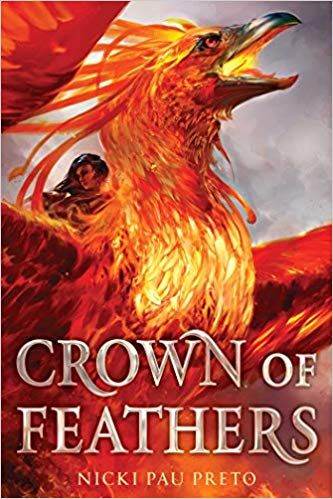
Crown of Feathers by Nicki Pau Preto: Phoenixes
As I said, there are more creatures than dragons that rule the skies. In Preto’s Crown of Feathers, Veronyka searches for the Phoenix Riders after being betrayed by her sister but finds out that girls aren’t allowed to ride. Veronyka disguises herself as a boy to enter their ranks.
This series was also made into a comic on Webtoon and has a season of episodes. The art is amazing!
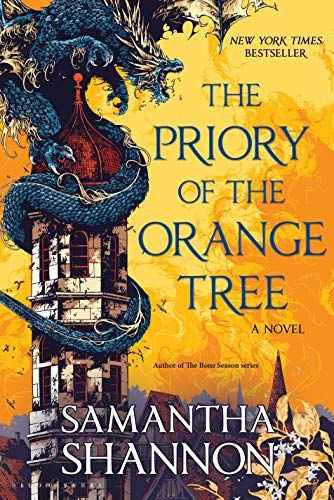
The Priory of the Orange Tree by Samantha Shannon: The Dragon Nayimathun
If you are looking for a book about dragons, and indeed a book that is a feminist retelling of the myth of Saint George and the Dragon, then this book is for you. It contains many dragons, but my favorite is the character Tané’s Lacustrine dragon named Nayimathun. In the Ginura, dragons are revered as gods, and to be a dragon rider is the highest honor.
“Those eyes were blazing rings of fire, and that mouthful of teeth invited no argument. Tané could not disobey a god. Her body was a vessel of water, and all water was theirs.”
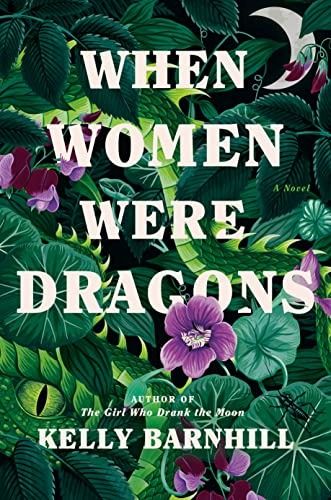
When Women Were Dragons by Kelly Barnhill: Dragons
This book is rife with rage that reflects the horrors women are facing today in this time of upheaval and oppression on body autonomy. When Women Were Dragons takes place in the 1950s (which we seem to be returning to), where there is a mass “dragoning,” in which hundreds of thousands of mothers and housewives turn into dragons.
“Does a flower remember its life as a seed? Does a phoenix recall itself as it burns anew? You will not see me again. I shall be but a shadow streaking across the sky — fleeting, speeding, and utterly gone.”
This will check your box for dragons, I promise you.
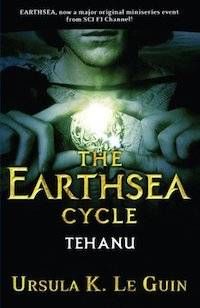
Tehanu by Ursula K. Le Guin: The Dragon Kalessin
Dragons play a big role in the entire Earthsea series, but Tehanu is one of Le Guin’s best works, and one of my favorite books ever. I felt the scene where the dragon Kalessin brings Ged back to Tenar was especially powerful. Ged, astride his back, is unresponsive, and the great dragon allows Tenar to mount his shoulder to take him. Tenar beholds this immense creature:
“The dragon looked away, westward, over the sea. It twitched its long body with a clink and clash of iron scales, then abruptly opened its wings, crouched, and leapt straight out from the cliff onto the wind. The dragging tail scored the sandstone as it passed.”
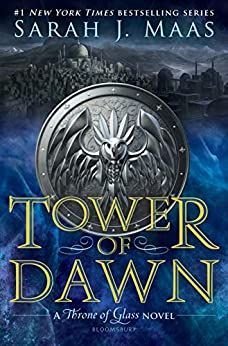
Tower of Dawn by Sarah J. Maas: Ruks
More giant birds!
Having read the Throne of Glass series, I actually found Tower of Dawn to be the best in the series. It was a nice reprieve from the intensity of the other character arcs, shedding light on a new land and array of characters. One of the best parts of Tower of Dawn are the ruks, giant eagle-like, gold-feathered birds that that rukhin ride on. The rukhin are the arial calvary for the khagans, the rulers of the southern continent. The flights and battles with these loyal birds were a blast to read. If you’ve hit your quota for dragon books, definitely take a dive into this one. Please note: It might be harder to navigate this book without reading the prior books in the series.
Forest Mythological Creatures
Forests are an important environment to many mythological creatures. Forests are old. Wise. They’ve been through it. And there’s something about a dense wood, thick with foliage, mysterious and alive, that is wonderful to read about. In some cases, the wood/forest is a character in itself, and I’ll include an example of that below.
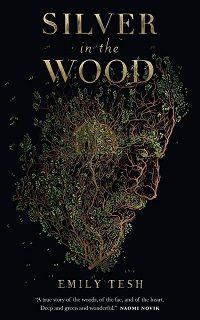
Silver in the Wood by Emily Tesh: Bramble the Dryad
Emily Tesh’s brilliant novella is one of my favorite books of all time. It follows Tobias, bound to the forest of Greenhollow, and Henry Silver, the young and handsome new owner of Greenhollow Hall. Greenhollow is full of mythological creatures, especially dryads, one of whom is named Bramble. She’s a curious, thorny, yet loyal dryad and I would read tomes of her making her angry, blunt observations.
“He saw the shadows settle over the floor as Bramble took up guard all around the place, calling up blackthorn and dark holly on every side, planting herself by the door in a menacing tangle. Well, there went Tobias’s vegetable garden.”
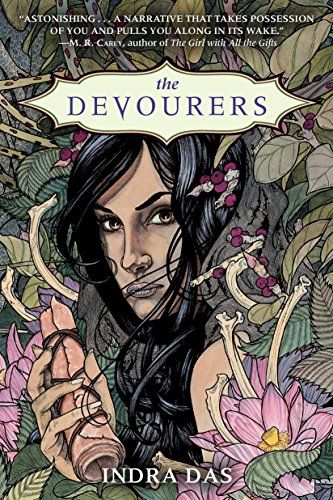
The Devourers by Indra Das: Werewolves
This is such a beautiful, atmospheric book, and each scene describing the werewolves hunting, being in the forest, made me drunk with imagination. It follows professor Alok, who meets a stranger and allows the stranger to tell him a story. This book is about stories as much as it is about werewolves.
“I think of what he’s asked me to think. Of man and wolf, man and animal, man and woman and animal, twisted together, fur and bones and flesh and claws and teeth, glowing eyes and arched spines, human skin peeling and tearing to spill out flea-bitten fur, a mass of memories from literature and film and myth and art.”
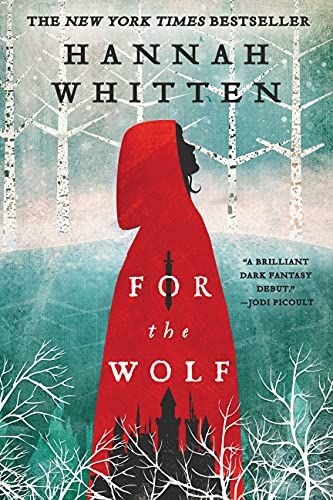
For the Wolf by Hannah Whitten: The Wood
Forests are powerful places in mythology with trees as equally powerful symbols. And there are some books where the forest itself becomes a character, as it does in Whitten’s epic tale. It follows Red, the second-born princess in a land where the second-born must be sacrificed to the Wolf in the Wood. Red feels power within herself, a connection to the Wood, as thick as soil and greenery in her blood. This a fun read, having everything from action to romance. The Wood produces other monstrous, mythological creatures (angry trees!).
If you like enjoy this book, the sequel, For the Throne, has even more monsters and myth-making to strike your fancy.
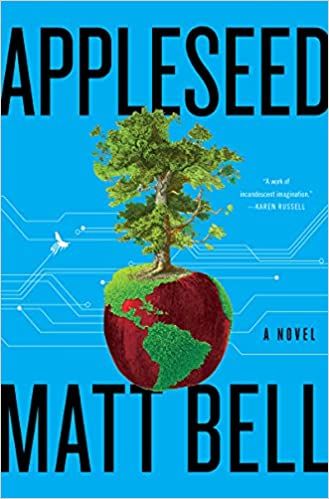
Appleseed by Matt Bell: Chapman the Faun
What’s really special about Matt Bell’s Appleseed is it tackles and interrogates American mythology. Of course, the United States of America is a baby in comparison to other countries and mythologies, but Bell tackles this one, bouncing from hundreds of years into America’s past, to a future dystopia where climate change has ravaged the Earth. The beginning introduces two brothers, one of whom is the faun Chapman:
“Chapman is one of a kind; he’ll build no house nor plant any garden, he accepts he’ll have no wife and raise no children, not like this, not as a species of one, half wild and half man, alone in the world except for his human brother.”
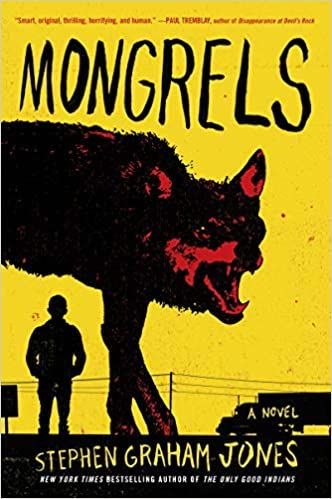
Mongrels by Stephen Graham Jones: Werewolves
Let’s bring some gritty, horror to the table! Stephen Graham Jones is the king of horror and this coming-of-age story is worth the read. It follows a boy who lives with his aunt and uncle as they navigate a world in the in between. Society doesn’t want them; doesn’t understand them. This is a meaty, brutal take on werewolves and those who live in a world, oppressed and misunderstood.
Land Mythological Creatures
This section includes creatures from environments other than the forest, such as deserts, plains, or even urban metropolises. Of course, some of the below could be argued as forest creatures, since they might delve into the forest, but I found it easier to organize it this way.
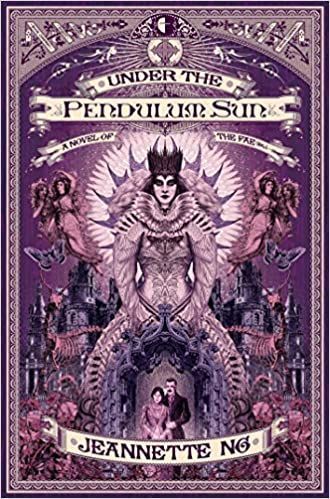
Under the Pendulum Sun by Jeannette Ng: The Fae
I am only including one fae example on purpose, do not hate me! The fae are rife in literature, and it would take a whole post and a gigantic list of examples to even scratch the surface of the history and existence of fae. But I wanted to showcase an assortment of creatures. However, the fae cannot be ignored and neither can Ng’s portrayal of Arcadia, the land of the magical, temptuous and creepy fae. Catherine Helstone goes to Arcadia to seek out her missing brother, who went to the lands in an attempt to convert the fae to Christianity. What Catherine finds is the gothic manor of Gethsemane and thoughts she’d been trying to bury her whole life. The fae are described as otherworldy and regal, and the Masquerade ball is a creepy feast for the senses.
“The stranger withe goldfish-tail hair plucked a shining grape from the ivy. She held it in her gloved hand, twisting it to catch the light. I could see now the scars down her arm and across her shoulder. Enochian scarred into her flesh.”
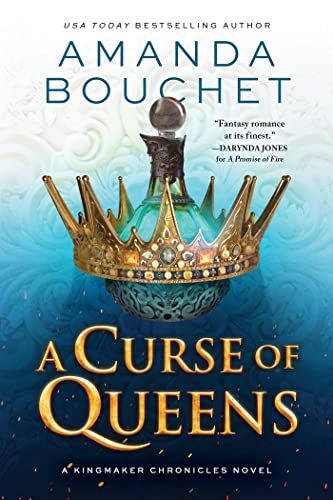
A Curse of Queens by Amanda Bouchet: The Minotaur
Fantasy romance is a treasure trove for finding mythological creatures. Romance authors know when best to use creatures for their conflict, plot, and romance, and Curse of Queens pulls out all the stops in this regard. Amanda Bouchet’s Kingmaker Chronicle series is heavily inspired by Greek mythology and all the characters and creatures who reside there. In the latest standalone addition to the series, the main characters Jocasta and Flynn meet the Minotaur on their way to find a way to break a curse. This minotaur is portrayed along the lines of most of the stories — as bloodthirsty fighter — and an epic battle ensues to get past him.
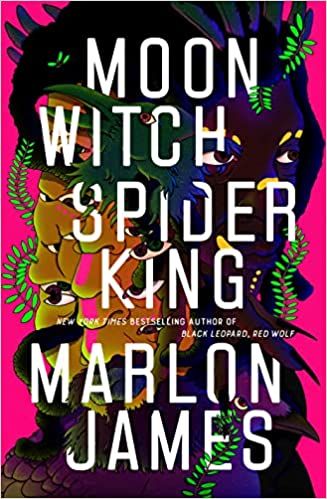
Moon Witch, Spider King by Marlon James: The Witch Sogolon
If you’re interested in delving into an epic fantasy series with brutality and grit that, I think, outdoes Game of Thrones, then look no further than Marlon James’s The Dark Star trilogy. Moon Witch, Spider King is the second book in the trilogy, and follows Sogolon, who is the adversary to Tracker in book one. Sogolon is a mythical figure that transcends what we’ve seen on this list. This is a woman who transforms into a witch over many trials and abuses, turning into this powerful being that controls the wind (not wind). Who you thought the character was in book one will be turned on its head.
There are many characters in the Dark Star trilogy that are mythical creatures. Marlon James’s trilogy has been called the “African Game of Thrones” for good reason. This Man Booker Prize winner writes one hell of a book.
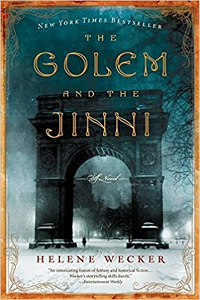
The Golem and the Jinni by Helene Wecker: The Golem
The Golem and the Jinni is a wondrous novel of history fiction, fantasy, and folk mythology. It’s about Chava, a golem made from clay by a man who practices dangerous Kabbalistic magic. Chava finds herself in New York City, her master having perished at sea, and meets Ahmad, a jinni made of fire from the Syrian Desert. Together they have to navigate who and what they are in 1899 New York. This is a rich, beautiful novel, and if you like this book, you should check out Wecker’s sequel The Hidden Palace.
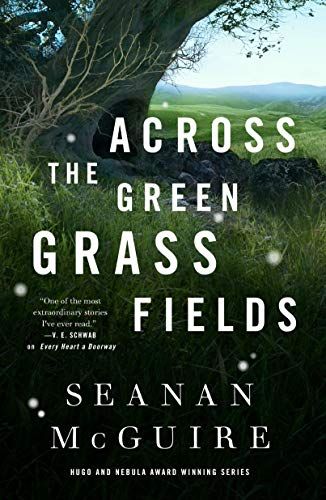
Across the Green Grass Fields by Seanan McGuire: The Centaurs
What is a mythological list of creatures without including centaurs? Seanan McGuire’s Wayward Children series is one of my favorite fantasy series of all time. This is the series we need to introduce to children about identity, acceptance, and finding where we belong.
In this 6th addition to the portal fantasy series, Regan finds herself in a complicated friend situation, and her parents also reveal that she is intersex. Regan’s unmoored by her friends and finds a door to the Hooflands. Here, there are centaurs, creatures that gallop across everlasting green fields.
Water Mythological Creatures
From sirens, to mermaids, to rusalkas, mythologies around the world love to include creatures from the depths below. Mermaids are a popular given, so I’ve chosen a few examples that highlight some lesser known, but equally amazing, mythological creatures.
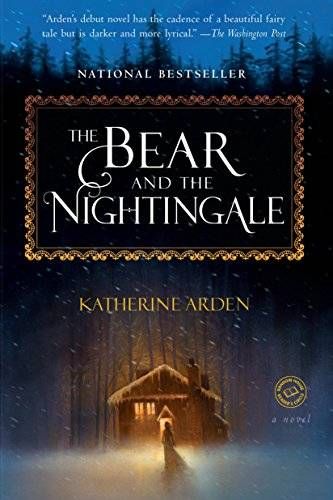
The Bear and the Nightingale by Katherine Arden: The Rusalka
Arden writes absolutely decadent and powerful prose, and this book is full of mythological creatures from Russian mythology. My favorite is the dangerous rusalka. The novel centers on Vasya, the daughter of a widowed leader of a Russian village settled deep in the woods. Vasya can see and interact with creatures from Russian myths, though no one else in the village can, and they all fear or hate Vasya in some way. Vasya and the rusalka befriend one another, there is a respect between them, despite the rusalka’s appetite for flesh.
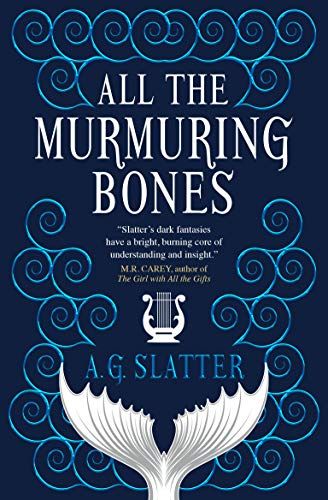
All the Murmuring Bones by A.G. Slatter: The Kelpie
Like Arden, Slatter’s bread and butter (yes this is a nod to her Sourdough stories, I am a huge fan, you should read them) is fairy tales and retellings. Many mythological and fairy tale creatures make an appearance in her books. The kelpie, though, is one of my favorites in this book. The story follows Miren O’Malley as she searches for a place called Blackwater, a place her mother escaped to after abandoning Miren to her grandparents. Miren meets a kelpie along her journey, frees him from a curse, and he is in her debt. Miren also makes the kelpie promise not to eat her and to only eat wicked people in the future.
“At last it’s done, and the kelpie stamps his hooves, pulls away sharply and begins to dance, tossing his head and moving sinuous as a seal in the water. I keep hold of the bridle, which feels disgusting and stinks.”
Mythological Creatures from Underworlds, Netherworlds, and the Afterlife
So many mythologies are known for the gods and creatures that inhabit the worlds beyond our own. Cerberus guarding the underworld. Angels in heaven. Here are a few creatures that are not bound by the elements like the many listed above.
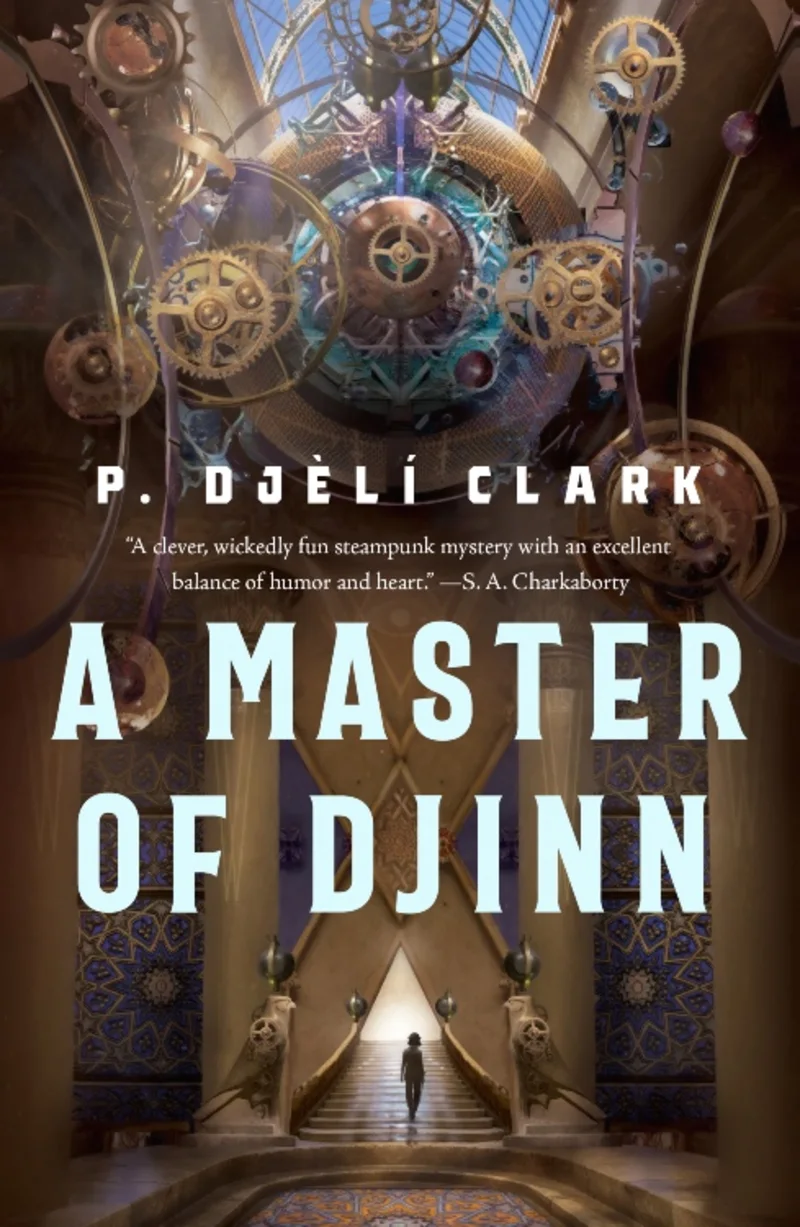
A Master of Djinn by P. Djèli Clark: Sobek aka Ahmad (and so many other characters and creatures)
I am tempted to list all of Clark’s works in this section because 1) he’s one of my favorite authors and I am shameless, and 2) he is able to weave myths and mythological creatures into his narratives fluidly and with immense style. A Master of Djinn has an assortment of mythological creatures, and the Djinn are central. One of my favorite characters, though, is Ahmad, who believes himself to be the chosen mortal of the Egyptian crocodile god Sobek. Ahmad’s physical appearance becomes more crocodilian every time Agent Fatma runs into him in the story. He gets some of the best lines and images.
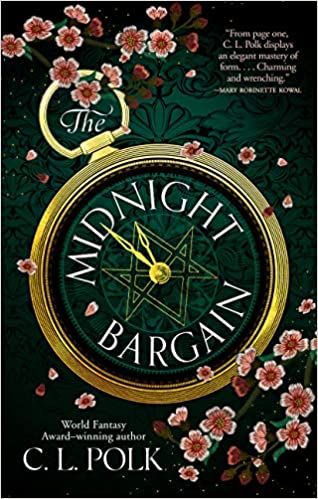
The Midnight Bargain by C.L. Polk: Nadi, Spirit of Chance
Polk builds a world of magic uniquely their own in The Midnight Bargain, following the magician Beatrice as she desperately seeks a way to maintain her magic and freedom. If she marries, she’ll be “collared,” her magic locked away. What gets the ball rolling in this novel is Beatrice summoning the spirit of chance, Nadi, who makes a bargain to help her find a grimoire in exchange for Beatrice’s first kiss, who happens to be with a man who she might just fall for. Summoning Nadi is similar to summoning many other demons and spirits in mythology, and often follows the similar rules: you scratch my back and I’ll scratch yours.
“‘Nadi, spirit of chance,’ she murmured, the taste of strawberry on her lips. ‘You are hungry, and I have sweets.'”
More Reading on Mythological Creatures
Mythological creatures abound in literature, as listed above. There are so many lands and beasts to explore. If you’re interested in further mythological readings, check out these other Book Riot posts:














